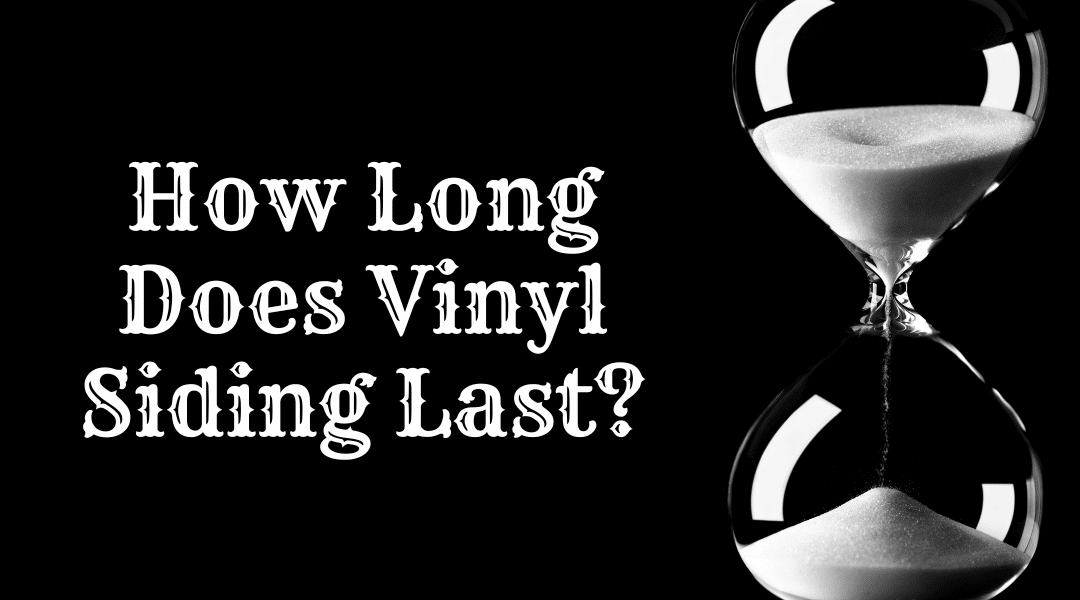How Long Does Vinyl Siding Last?
When it comes to enhancing the exterior of your home, choosing the right siding material is a crucial decision. Vinyl siding has gained immense popularity over the years, thanks to its affordability, durability, and low maintenance requirements. However, homeowners often wonder how long vinyl siding lasts in comparison to traditional siding options like wood, aluminum, and fiber cement. In this article, we’ll explore the longevity of vinyl siding and compare it with other traditional choices, considering factors such as lifespan, maintenance, cost, and durability.
Lifespan
Vinyl Siding: Vinyl siding boasts an impressive lifespan of 20 to 40 years or more, making it a long-lasting choice for homeowners. This longevity is primarily due to its resistance to weathering, rot, and pests. Modern vinyl siding is designed to withstand the harshest weather conditions, ensuring it retains its appearance and structural integrity over time. Regular maintenance can extend its life, as well as choosing a high-quality vinyl and following proper application techniques.
Wood Siding: Traditional wood siding, while beautiful, requires more maintenance and is susceptible to rot, pests, and weather-related damage. Properly maintained, wood siding can last around 20 to 30 years. However, it may require regular staining, painting, and repairs to achieve this lifespan. Many homeowners find the sacrifice worth it for the gorgeous appearance of wood.
Aluminum Siding: Aluminum siding can endure for 30 to 50 years or more, given its resistance to rust and pests. It has a longer lifespan than wood but may dent more easily.
Fiber Cement Siding: Fiber cement siding is known for its exceptional durability and can last 30 to 50 years or even more with proper maintenance. It is fire-resistant and less susceptible to rot and pests, making it a strong competitor in terms of lifespan.
Maintenance
Vinyl Siding: Vinyl siding is relatively low-maintenance, requiring periodic cleaning to prevent mold and mildew buildup. Unlike wood, it doesn’t need staining or painting. Occasional power washing and inspections are typically sufficient to keep it looking great.
Wood Siding: Wood siding demands regular maintenance, including painting or staining every few years to protect it from the elements. Inspections for rot and pest infestations are essential to extend its lifespan.
Aluminum Siding: Aluminum siding is also low-maintenance, as it doesn’t require painting or staining. Cleaning and occasional repainting for aesthetic reasons are the primary maintenance tasks. Repainting aluminum can require special preparation and materials to achieve the desired appearance.
Fiber Cement Siding: Fiber cement siding requires minimal maintenance, similar to vinyl siding. Occasional cleaning and inspections for damage are typically all that’s needed to preserve its appearance and structural integrity. Fiber cement siding may require occasional repainting.
Cost
Vinyl Siding: Vinyl siding is one of the most cost-effective siding options available. Its affordability, combined with its long lifespan and low maintenance costs, makes it an attractive choice for budget-conscious homeowners.
Wood Siding: Wood siding is generally more expensive upfront due to material costs and installation labor. Additionally, ongoing maintenance costs can add up over time.
Aluminum Siding: Aluminum siding falls in the mid-range in terms of cost, but its longevity and minimal maintenance requirements can make it a cost-effective choice.
Fiber Cement Siding: Fiber cement siding is comparable in cost to wood siding but offers better long-term value due to its durability and low maintenance needs. Compared to vinyl, fiber cement does have slightly more maintenance costs as it may require occasional repainting. This can be benefit if you may want to change your home’s color in the future.
Durability
Vinyl Siding: Vinyl siding is highly durable, with resistance to moisture, pests, and UV rays. It won’t rot, warp, or corrode, making it a reliable choice for long-lasting protection and curb appeal.
Wood Siding: While wood siding has a classic charm, it’s more susceptible to damage from moisture, pests, and weather. Regular maintenance is essential to ensure its durability. However, with proper care wood siding can last for decades and maintain a beautiful appearance in exchange for the effort.
Aluminum Siding: Aluminum siding is resistant to rust and pests, making it durable. However, it can dent if subjected to significant impact. Not all aluminum siding is the same either – as paint can chip and be difficult to maintain over long periods, dependent on the brand and manufacturer application.
Fiber Cement Siding: Fiber cement siding offers outstanding durability, with resistance to fire, moisture, pests, and UV rays. It’s a top choice for homeowners seeking a long-lasting and low-maintenance siding option.
The last word
When evaluating the longevity of vinyl siding compared to other traditional options like wood, aluminum, and fiber cement, vinyl emerges as a strong contender. Its impressive lifespan, low maintenance requirements, cost-effectiveness, and durability make it a practical choice for homeowners looking to enhance their homes’ exteriors. Ultimately, the decision should consider your budget, aesthetic preferences, and long-term maintenance commitments. Vinyl siding is a reliable and enduring choice that can provide your home with years of protection and beauty.

